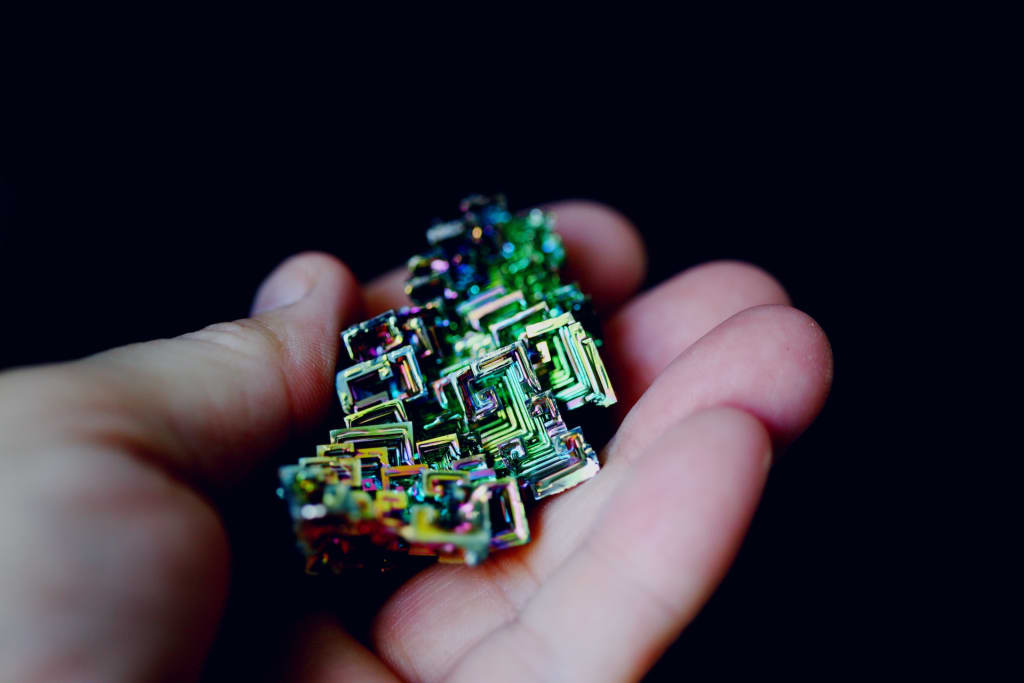Bismuth in Art and Design: Innovative Applications and Creative Possibilities
Bismuth, a crystalline element with iridescent colors, has been increasingly used in art and design due to its unique properties.

Bismuth, a crystalline element with iridescent colors, has been increasingly used in art and design due to its unique properties. In the field of jewelry making, bismuth is valued for its aesthetic qualities and ability to create striking rainbow-colored pieces. This is because when heated, bismuth develops an oxide layer that refracts light into a range of hues.
Beyond jewelry-making, bismuth is also used in sculpture and installation art. Artists such as Bruce Gray have utilized the element's crystal formations to create intricate structures that seemingly defy gravity. In addition, bismuth can be incorporated into furniture design by adding it to resin or paint for a colorful effect.
The innovative applications of bismuth extend beyond aesthetics as well. It is being studied as a potential material for 3D printing due to its low toxicity and high melting point compared to other metals commonly used in additive manufacturing. As more artists and designers experiment with this fascinating element, we can expect even more creative possibilities in the future.
History: Ancient Use of Bismuth
The ancient use of bismuth dates back to the Egyptians, who used it in cosmetics and art. The vibrant colors produced by bismuth were highly valued and used to create colorful jewelry and decorative objects. In medieval times, bismuth was also used as a pigment in stained glass windows.
Today, bismuth is still used in art and design due to its unique properties. When heated, it forms a distinctive rainbow-colored oxide layer on its surface that can be manipulated for artistic purposes. This process is known as iridescence and has been utilized in creating intricate designs on jewelry pieces.
In addition to its artistic applications, bismuth is also commonly found in pharmaceuticals, electronics, and even some types of ammunition. Its versatility makes it a valuable material for various industries and its history proves just how long humans have been fascinated by this element's beauty and potential uses.
Properties: Unique Characteristics
One of the unique characteristics of Bismith is its iridescent property. This attribute makes it an excellent material for art and design applications, as it can be used to create a range of colorful and visually striking effects. Bismuth crystals are often used in jewelry making, where their rainbow-like hues add a stunning touch to earrings, necklaces, and bracelets.
Another interesting characteristic of bismuth is its low toxicity compared to other heavy metals. This makes it an attractive alternative for use in certain industrial and manufacturing processes that require materials with similar properties as heavier metals but without the associated health risks. In addition, bismuth's low melting point makes it easy to work with, allowing for greater flexibility in design applications.
Overall, bismuth's unique characteristics make it an exciting material for artists and designers looking to push creative boundaries while also prioritizing safety and sustainability in their work. As more people become aware of this versatile element's potential applications, we can expect to see even more innovative uses emerge across various industries.
Applications: Current Trends and Ideas
Bismuth is a chemical element that has become increasingly popular in recent years for its unique properties and vibrant colors. In the field of art and design, bismuth has been used to create stunning pieces that are both visually appealing and scientifically intriguing. One example of this is the bismuth crystal, which can be grown in a variety of shapes and sizes.
Another innovative application of bismuth is in the production of iridescent pigments, which are used in everything from cosmetics to automotive paint. These pigments have a unique shimmering effect that changes color depending on the angle at which they are viewed. This makes them an ideal choice for creating eye-catching designs that stand out from the crowd.
In addition to its aesthetic applications, bismuth also has practical uses in fields such as medicine and electronics. For example, it can be used as a contrast agent for X-rays or as a component in soldering alloys. As technology continues to advance, it will be interesting to see how else this fascinating element will be incorporated into our lives and creative pursuits.
Creative Possibilities: How to Incorporate Bismuth
Bismuth has become increasingly popular in the art and design world due to its unique physical properties. Its iridescent, rainbow-like colors make it a favorite among jewelry makers, while its low toxicity and high density make it ideal for use in sculpture. Bismuth can also be used as a pigment in paint, creating an otherworldly shimmer that is difficult to replicate with traditional pigments.
In addition to being visually striking, bismuth also has practical applications in design. Due to its low melting point, bismuth can be easily molded into intricate shapes and structures using 3D printing technology. This makes it an excellent material for creating custom parts or prototypes for industrial designers.
Overall, incorporating bismuth into your art or design work presents endless creative possibilities. Whether you are looking to add a unique touch of color to your jewelry designs or create innovative structures using 3D printing technology, bismuth is sure to inspire new ideas and push the boundaries of what is possible in the world of art and design.
Challenges and Opportunities
Challenges and opportunities abound in the world of bismuth art and design. One major challenge is working with the unique properties of bismuth itself. The metal has a low melting point, which can make it difficult to work with, but also provides opportunities for experimentation with casting and molding techniques. Additionally, bismuth has a tendency to oxidize quickly, requiring careful handling during creation to maintain its desired appearance.
However, these challenges also present exciting opportunities for artists and designers looking to create truly innovative pieces. Bismuth's unique physical properties offer endless possibilities for creating intricate patterns and textures that are not possible with other metals. Additionally, its iridescent coloration offers a range of visual effects that can be used in everything from jewelry design to sculpture.
Overall, while working with bismuth may require some extra effort on the part of artists and designers due to its unique characteristics, the potential rewards make it an exciting material choice for those who want to push boundaries and explore new creative possibilities.





Comments
Rohit Kumar is not accepting comments at the moment
Want to show your support? Send them a one-off tip.